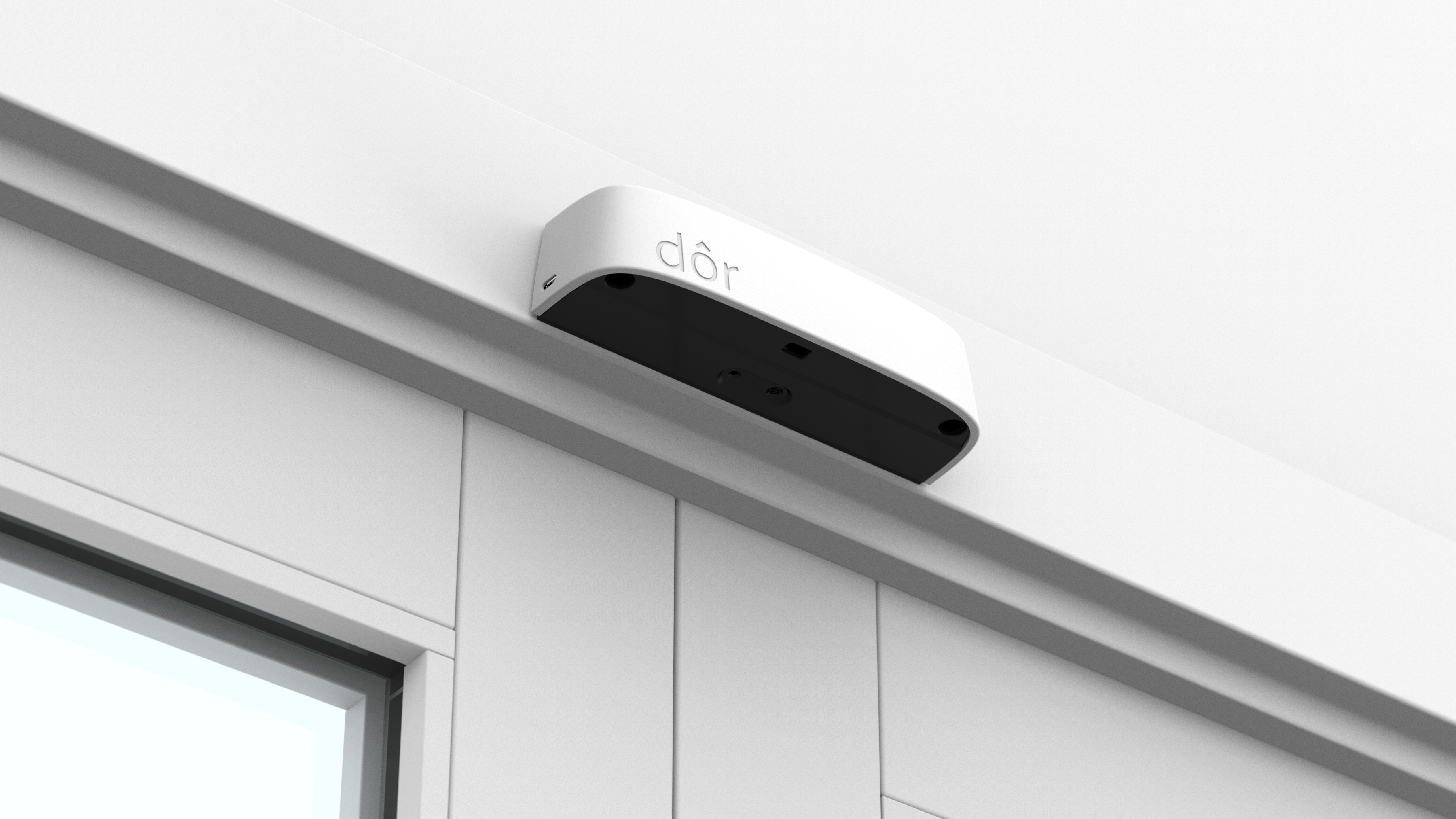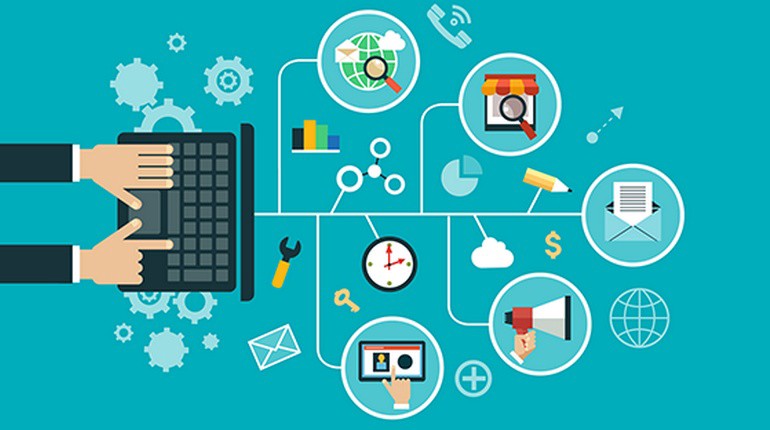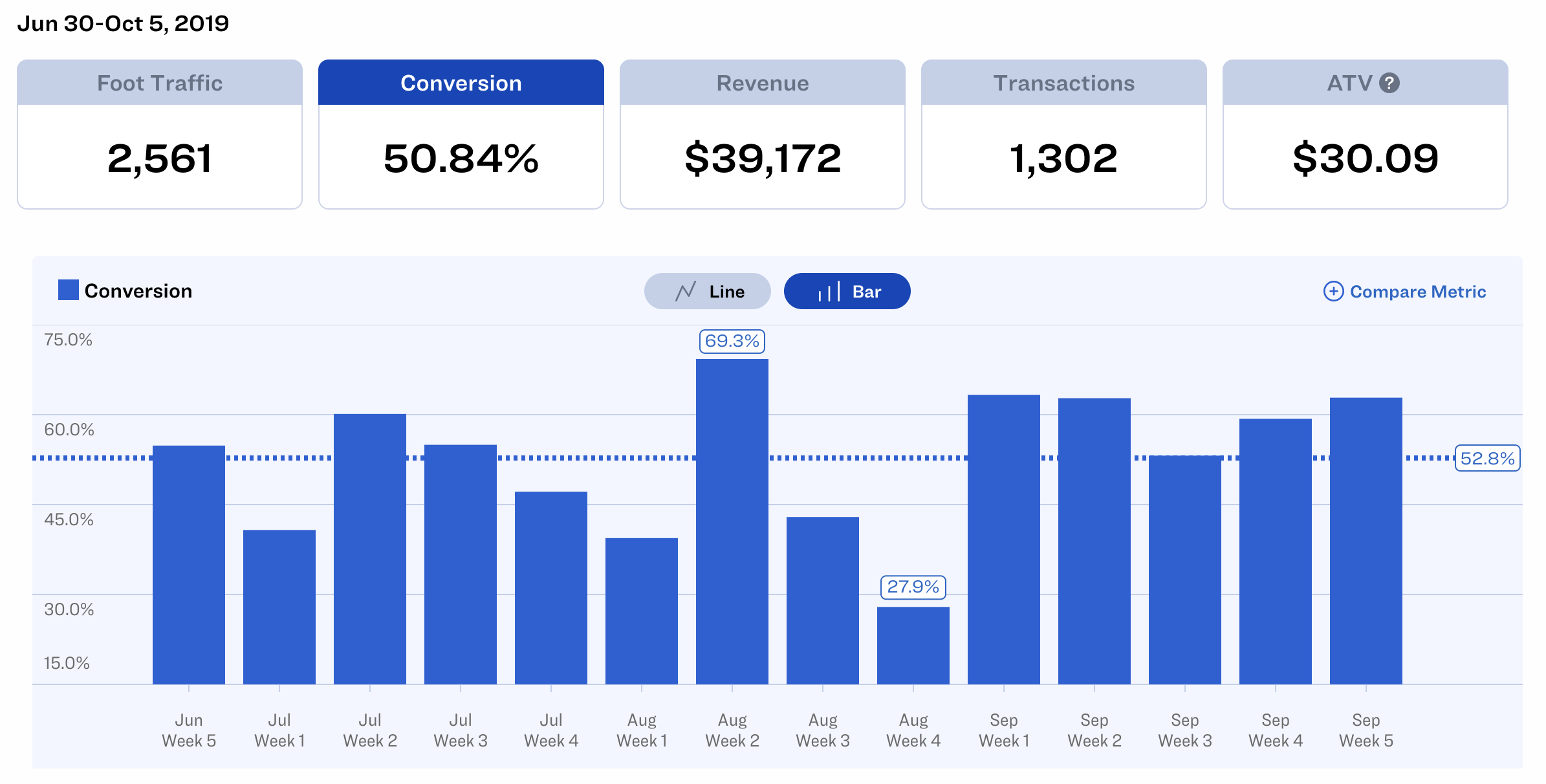It’s no secret that data reigns supreme in the retail landscape of our day.
Whether you’re a manager at a small retail store or running a multinational enterprise retailer, a large part of your business intelligence will depend on correctly assessing your retail analytics.
Here, we take a look at the latest retail trends as well as retail technology driving businesses to achieve more – and better – in the upcoming months.
Related: Top 15 Retail Analytics Companies to Watch in 2021
1. Machine learning
A subset of Artificial Intelligence (AI), machine learning is the process where computer-run systems automatically learn and improve from their experience without the need for additional programming.
This technology is quickly becoming the solution de rigueur for both brands and retailers looking to stand out from the crowd. One of the most common uses for machine learning in retail is in recommendation engines and chat robots, which “learn” from their operations to improve over time.
Another increasingly popular machine learning-based tool is visual search, whereby consumers might search the image of an item to access details such as brand name and pricing. Facial recognition software also falls in the realm of machine learning, as it gradually learns to get better at detecting people.
In addition to its use in online services like bots and search engines, machine learning can also benefit specific products for retailers. One example is the thermal foot traffic counter from Dor, which relies on machine learning technology to get more accurate at counting people over time.

Click here to discover how Dor's accuracy is enhanced by its machine learning algorithm on every door & condition and thus help you make better business decisions based on your store's foot traffic data.
Related: People Counters & People Counting: Everything You Need to Know
2. Internet of Things (IoT)
For as much publicity as AI gets, it wouldn’t function without the Internet of Things (IoT).
This interconnectivity of everyday objects via the Internet is what enables data to be transmitted among a vast array of devices such as smartphones, POS systems, security systems and more. Most IoT-enabled devices come with sensors that monitor and track data.
For retailers, IoT technology makes life easier in all kinds of ways, from easily locating shopping carts equipped with GPS functionality to helping customers locate items in large stores – down to the aisle, row and box number.
Another advantage of IoT for retailers is its efficiency in stock management, as sensors regularly monitor shelves throughout warehouses and other storage spaces to ensure there is enough inventory on hand. IoT is also useful for large retailers that want to implement dynamic pricing and labeling depending on factors like expiration dates and stock availability. For even larger retailers, IoT can make a huge difference by automating or expediting order fulfillment, thus helping them compete in the era of next-day delivery.
3. Predictive insights and analytics
More and more, companies are utilizing big data in ways that help them predict future trends in consumer behavior.
Thanks to the surge of predictive insights, retailers are now able to rely on historical data to take an in-depth look at their customer base. This allows them to detect which long-time customers might be straying from the brand and present them with special offers or services to bring them back.
Predictive analytics also lets retailers spot customers who are loyal to the brand, enabling them to cater to these individuals with loyalty programs. On the business management side, predictive analytics helps retailers optimize their staffing based on factors like weekly or seasonal store occupancy data.

4. Personalization
Personalization is certainly enjoying its moment in the world of retail. The focus on customization has long surpassed the individualized marketing or promotional messages we’ve all received at some point, as the golden era of data has enabled brands to customize not just their messaging but their product recommendations, as well.
Related: 15 Social Media Marketing Tips for Retailers to Increase Sales
With consumers’ ever-growing interest in having something that no one else has, it should come as no surprise that the personalization of products themselves is quite popular.
Retailers have fast adopted the trend, offering consumers seemingly endless options to monogram their stationery, select their own verbiage for apparel and even customize their sneakers with bespoke colors and designs.
5. Data visualization
With so much data at our fingertips, making sense of it all is often daunting – yet a competitive marketplace also makes it more necessary than ever before to understand what the data has to tell us.
This is precisely where the growing trend of data visualization comes in. Properly visualized data helps store managers and business owners track key performance indicators (KPIs) for their retailer in real-time, with some of the most common data points across the board being sales by location, conversion rates, product categories and revenue.
Related: How to Calculate (and Increase) Retail Conversion Rate
By accessing this information in easily digestible format, retail decision-makers lose no time implementing the changes necessary to streamline their operations and boost sales.

Click here to discover how Dor is using data-visualization to help retailers make better business decisions based on their store's foot traffic data.
6. Extended reality
One of the most exciting developments in retail technology in recent years is the rise of extended reality, which encompasses both augmented reality (AR) and virtual reality (VR).
Retailers can utilize this technology in multiple ways. By creating AR and VR experiences such as 360˚ immersive videos for their consumers, they can help potential buyers experience products in a way that mimics real life – which is extremely useful when purchasing big-ticket items like furniture or electronics.
Not only does AR and VR technology help consumers imagine what a particular item would look like in their home, but it also benefits retailers in that they can visualize in-store layout and stocking as well as review and analyze consumer behavior scenarios.
7. Voice search
With digital assistants like Siri, Alexa and Google Assistant available at the touch of a button, it’s no wonder that more and more people are using voice search technology to simplify everyday tasks.
Whether it’s to find directions to a store, learn its operating hours or explore product reviews on the way to the retailer, consumers are increasingly relying on information provided by voice search to make purchases.
Retailers looking to make the most of this AI-based technology must optimize their online presence much like they do SEO for their websites, considering natural speech patterns and user intent in their keywords.
8. Omnichannel data integration
Omnichannel data integration is key for retailers looking to offer customers a seamless experience across online, mobile and physical platforms.
This practice relies on obtaining information from multiple data sources, often amalgamating commercial data, supply chain data and customer data to inform a retailer’s business decisions.
By using omnichannel data integration, businesses can reach potential shoppers via numerous channels both online and offline, thus increasing the likelihood that they will be converted into customers. Another way brands can utilize omnichannel data integration is by offering customers unique experiences – like reaching out via email or app to invite select customers to in-store events.

9. Contactless and mobile payments
Over the past few years, increased media coverage of card fraud and identity theft cases have pushed consumers to be wary of how they make payments – which explains the explosion of contactless and mobile payment providers in the retail industry.
Contactless payment relies on radio-frequency identification (RFID) or near field communication (NFC) technology, which enables users to pay with a debit, credit or smartcard without having to physically hand over the card to the merchant.
While contactless payment requires close physical proximity, mobile payments are made via broad-area cellular or WiFi networks, making them the preferred option for online retailers as well as those offering Buy Online, Pick Up in Store (BOPIS) services until now.
However, as new-generation stores like Amazon Go begin to gain traction, we can expect brick-and-mortar stores to adopt mobile-only payment systems for the ease and security of their customers.
10. In-store experiences
As the world of retail moves steadily in the direction of e-commerce, it becomes ever more important for brands to demonstrate what makes their physical locations unique, whether it’s by making it a priority to offer excellent customer service or by hosting frequent pop-up events.
Related: 15 In-Store Promotion Tactics to Increase Retail Sales
Business-savvy retailers can transform their physical stores into an asset for the brand by employing a variety of the retail trends we’ve already mentioned – from getting customers to engage with products via AR/VR applications to utilizing machine learning technology to interact with potential shoppers in fun and exciting ways.
For more traditional retailers, the solution could be as simple as offering in-store-only personalization options on their products. Regardless of the type of retailer, a thorough look at retail analytics can help uncover potential areas where the customer can be made to feel special.